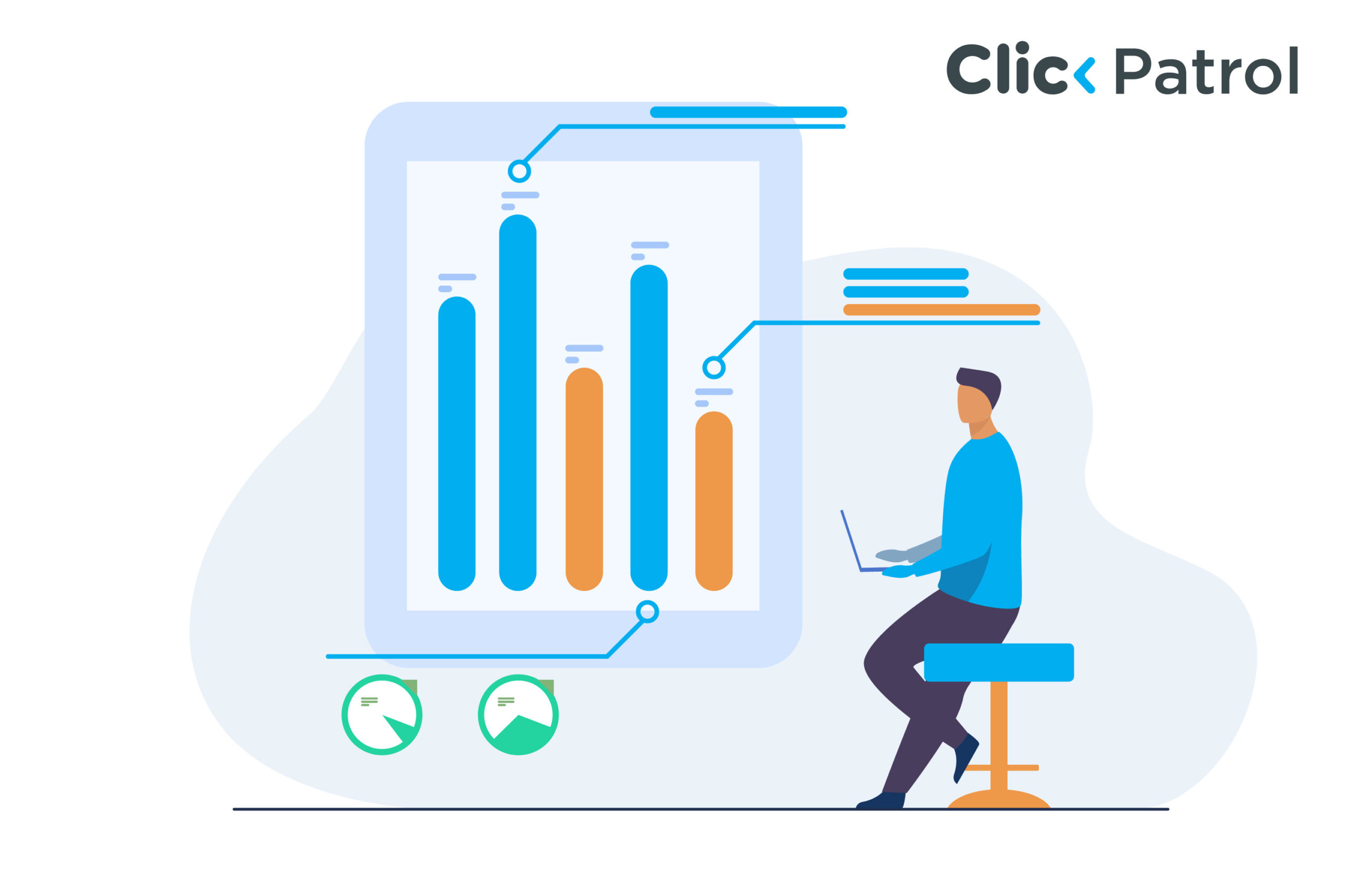Differences may arise due to variations in attribution models, tracking methodologies, and time zones.
Differences Between Google Ads and Google Analytics Conversion Tracking
Abisola Tanzako | Aug 14, 2024

Table of Contents
- Understanding Google Ads conversion tracking
- How Google Ads conversion tracking works
- Understanding Google Analytics conversion tracking
- How Google Analytics measures conversion tracking
- The key differences between Google Ads and Google Analytics conversion tracking
- When to use both Google Ads conversion tracking and Google Analytics conversion tracking
- Best practices for using Google Ads and Google Analytics for conversion tracking
- Use these tools for your specific needs
Understanding how your marketing efforts translate into visible results is crucial in any form of marketing. In digital marketing, conversion tracking is the best way to monitor your marketing efforts. Google Ads and Google Analytics are the two widely recognized and effective platforms that can offer conversion-tracking capabilities.
Both tools offer conversion-tracking capabilities, serving different purposes, despite clear distinctions between the platforms’ tracking and reporting of conversions, data sources, and reporting capabilities.
This article will help you understand Google Ads and Google Analytics conversion tracking, how they both work, explore the differences between Google Ads and Google Analytics conversion tracking, and provide a guide for when to use each tool.
Understanding Google Ads conversion tracking
Google Ads conversion tracking is a free feature within the Google Ads platform that allows advertisers to measure the success of their online ad campaigns and track specific actions after interacting with their ads.
The primary purpose of Google Ads conversion tracking is to measure the effectiveness of ad campaigns and optimize bids, targeting, and ad creativity for better performance.
Google Ads conversion tracking is a feature specifically designed to measure the effectiveness of paid advertising campaigns. It uses a tracking tag and pixel-based tracking method where a small piece of code is added to your website or mobile app.
This code indicates when a user completes a desired action, such as a purchase or filling out a contact form. The tracking data is optimized, enabling advertisers to analyze campaign performance, refine their strategies, adjust bids, and improve return on investment.
Google Ads conversion tracking supports various conversion types, including website actions, phone calls, app installs, and imported offline conversions, providing a holistic view of ad performance and empowering data-driven decision-making in digital advertising campaigns.
How Google Ads conversion tracking works
Google Ads conversion tracking monitors the user’s ad journey, from ad interaction to action completion. The process begins when an advertiser sets up conversion actions in their Google Ads account and adds a tracking tag to their website.
As the user navigates the website and completes a predefined conversion action (such as a purchase or form submission), the tracking tag on the conversion page communicates with the cookie, sending data back to Google Ads.
This links the conversion to the original ad click. Google Ads then records the conversion, attributing it to the appropriate campaign, ad group, ad, and keyword.
The system can track conversions across devices if users are signed into their Google accounts, providing a more comprehensive view of the customer journey.
Advertisers can view detailed conversion data in their Google Ads account, including metrics like conversion rate and cost per conversion.
Understanding Google Analytics conversion tracking
Google Analytics conversion tracking is a sophisticated system and a feature within the Google Analytics platform that estimates the effectiveness of online advertising campaigns.
It utilizes JavaScript-based tracking, which is implemented through the Google Analytics tracking code placed on all pages of your website, allowing for the tracking of specific goals and events on websites or mobile apps.
The primary purpose of Google Analytics conversion tracking is to measure user behaviour and track progress toward website or app goals. When a user clicks on a Google ad, a temporary cookie is set in their browser, containing information about the ad click.
Suppose the user completes a predefined conversion action on the advertiser’s website (such as purchasing or submitting a form). In that case, the conversion tracking code communicates with the cookie, sending data back to Google Ads to record the conversion.
This comprehensive tracking system empowers advertisers to optimize their campaigns based on insights and improve their return on ad spend. Google Analytics conversion tracking can measure various types of conversions and user interactions, from page views to complex multi-step processes.
How Google Analytics measures conversion tracking
Google Analytics works through data collection, processing, and reporting to provide insights into website and app user interactions.
The system begins by embedding a small JavaScript tracking code on the website, which collects various data points about user interactions, including page views, time spent, demographics, device information, and traffic sources.
This collected data is then sent to Google’s servers as ‘hits’, where it undergoes processing and organization into meaningful information using filters, segments, and attribution models.
The processed data is stored in Google’s databases, organized by property and view, and retained according to specified settings. Google Analytics presents this information through customizable reports in its web interface, categorized into audience, acquisition, behaviour, and conversions.
The platform offers data processing for current activity monitoring and integrates with other Google products and third-party tools for enhanced analysis. It also utilizes machine learning algorithms to generate insights and predictions.
The key differences between Google Ads and Google Analytics conversion tracking
- Data source: Google Ads tracks conversions only from its ads, while Google Analytics tracks conversions from all traffic sources.
- Attribution models: Google Ads uses last-click attribution by default, whereas Google Analytics offers multiple attribution models (e.g., first-click, linear, and time decay).
- Conversion window: Google Ads allows customizable conversion windows for up to 90 days. Google Analytics has a default attribution window of 6 months for acquisition reports.
- Cross-device tracking: Google Ads provides more comprehensive cross-device conversion tracking. Google Analytics has limited cross-device tracking capabilities.
- Conversion types: Google Ads focuses on specific actions, such as purchases or sign-ups. Google Analytics tracks a broader range of user interactions and engagement metrics.
- Integration with bidding: Google Ads conversion data directly influences automated bidding strategies. Google Analytics requires additional setup to use data for bidding strategies.
- Reporting interface: Conversion data is prominently displayed in the Google Ads main dashboard, and in Google Analytics, it is found within specific reports.
- Offline conversion tracking: Google Ads supports importing offline conversions. Google Analytics has limited capabilities for tracking offline conversions.
- View-through conversions: Google Ads tracks view-through conversions for display and video ads, but Google Analytics does not.
- Cost data: Google Ads provides detailed cost data associated with conversions. Google Analytics requires additional setup to import cost data from Google Ads.
When to use both Google Ads conversion tracking and Google Analytics conversion tracking
Google Ads conversion tracking:
- Campaign optimization: Google Ads conversion tracking can be utilized when your primary goal is to optimize ad campaigns. This tracking method provides detailed insights into which ads, keywords, and campaigns are most effective in driving conversions.
- Automated bidding strategies: When leveraging Google Ads automated bidding strategies such as Target CPA (cost per acquisition) or Target ROAS (return on ad spend), Google Ads conversion tracking is essential. These advanced bidding strategies rely on accurate conversion data to optimize bids.
- Cross-device tracking: Google Ads offers high cross-device conversion tracking. Using this can help with understanding the full customer journey across different devices. This is particularly useful for businesses with longer sales cycles or those targeting tech-savvy audiences who frequently switch between devices.
- View-through conversions: If you are running display or video ad campaigns, Google Ads conversion tracking is crucial for measuring view-through conversions. These conversions occur after a user views your ad but does not click immediately.
- Offline conversion tracking: For businesses that generate leads online but close sales offline (e.g., B2B companies and car dealerships), Google Ads offers robust offline conversion import capabilities. Use this when connecting your online advertising efforts with offline sales data.
- Specific ad platform insights: When you need granular insights about your Google Ads performance, utilize Google Ads conversion tracking. It provides detailed data on metrics like quality score, ad position, and impression share, which are crucial for understanding and improving your ad performance within the Google Ads ecosystem.
Google Analytics conversion tracking:
- Holistic digital strategy: Use Google Analytics conversion tracking when you need a comprehensive view of your entire digital strategy. Unlike Google Ads, which focuses solely on paid search, Google Analytics tracks conversions from all traffic sources, including organic search, direct traffic, referrals, and social media. This holistic view is crucial for understanding how different channels contribute to your digital success and for making informed decisions about budget allocation across various marketing channels.
- Multi-channel attribution: When understanding complex customer journeys across multiple touchpoints, Google Analytics multi-channel attribution models (e.g., first-click, linear, and time decay) provide insights into how different channels contribute to conversions throughout the customer journey. This is particularly useful for businesses with longer sales cycles or those operating in competitive markets, where customers typically engage with multiple touchpoints before making a conversion.
- In-depth user behaviour analysis: To optimize your user experience, improve site navigation, or identify potential roadblocks in your conversion funnel.
- E-commerce tracking: For online retailers or businesses with complex e-commerce setups, Google Analytics offers more comprehensive e-commerce tracking capabilities. This can be utilized when detailed insights into product performance, shopping cart abandonment rates, and shopping behaviour are needed.
- Custom reporting and segmentation: Google Analytics offers more flexibility for creating highly customized reports or segmenting data in complex ways. To explore specific user segments, create custom dimensions or metrics, or generate reports that combine data from multiple sources.
- Integration with other marketing tools: When utilizing marketing tools and platforms, Google Analytics often serves as a central hub for data integration. Google Analytics conversion tracking combines data from multiple sources (e.g., CRM systems and email marketing platforms) to get a complete picture of your marketing performance.
Best practices for using Google Ads and Google Analytics for conversion tracking
When using Google Ads and Google Analytics for conversion tracking, keep these in mind:
- Implement both tracking systems: Using Google Ads and Google Analytics conversion tracking simultaneously allows you to leverage the strengths of each platform and cross-reference data for accuracy and deeper insights.
- Align conversion definitions: Ensure conversion definitions are consistent across both platforms. This helps to compare data and avoid confusion when analyzing performance.
- Use Google Tag Manager: Implement tracking codes using Google Tag Manager. This centralizes your tracking implementation, making it easier to manage multiple tags and reducing the likelihood of errors.
- Set up cross-domain tracking: If your conversion process spans multiple domains, set up cross-domain tracking in both Google Ads and Google Analytics. It prevents the loss of valuable data when users navigate between your domains.
- Utilize custom dimensions and metrics: In Google Analytics, use custom dimensions and metrics to capture additional data relevant to the business. This can provide more context for your conversion data and facilitate a more in-depth analysis.
- Regularly audit your tracking: Perform regular audits of your conversion tracking setup on both platforms. This helps identify discrepancies, track all desired conversions, and maintain data accuracy.
- Leverage remarketing lists: Use conversion data to create remarketing lists in both Google Ads and Google Analytics. This enables more targeted advertising to users who have expressed interest.
- Implement value-based bidding: Assign monetary values to your conversions. This enables value-based bidding strategies in Google Ads and provides more meaningful ROI analysis on both platforms.
Use these tools for your specific needs
Google Ads and Google Analytics conversion tracking are two distinct tools with different purposes, tracking methods, and reporting capabilities.
It is recommended that Google Ads conversion tracking be utilized to optimize ad campaigns and Google Analytics conversion tracking to analyze user behaviour and track campaign progress toward website or app goals. This will enhance your marketing performance and enable you to make informed decisions to refine your strategies.
Frequently Asked Questions
-
Why do Google ads and Google Analytics conversion rates frequently vary?
-
Can I optimize my Google Ads campaigns using Google Analytics data?
Yes, you can link your Google Analytics and Google Ads accounts to import Analytics goals and e-commerce transactions into Google Ads.
-
How can I make sense of discrepancies in conversion data between the two platforms?
Make sure your tracking configuration is accurate on both platforms first. Next, variables such as tracking approaches, attribution windows, and conversion definitions should be considered when assessing the data.






